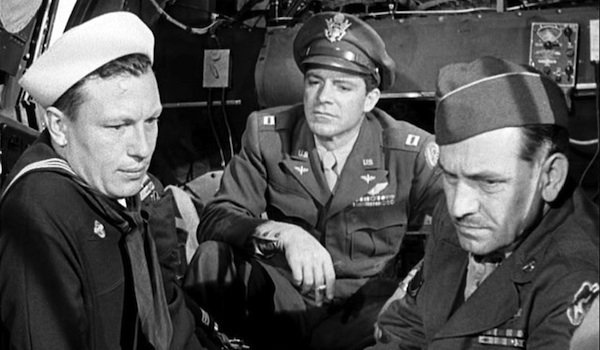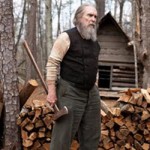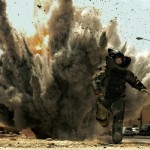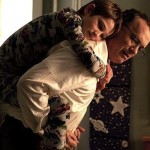The Best Years of Our Lives Review
Sometimes the hardest thing for a soldier isn’t surviving the war—it’s coming back home when it’s over. This theme has been explored dozens of times (including very recently in The Hurt Locker), but one of the first to do so was William Wyler’s Best Picture-winning The Best Years of Our Lives. The film thoughtfully examines the post-war lives of three WWII vets, who are all struggling to re-integrate themselves in small town America (albeit in different ways). Wyler’s film is overlong, but it’s also insightful and quite moving.
The three men front and center in The Best Years of Our Lives are Al (Fredric March), Fred (Dana Andrews), and Homer (Harold Russell). Al was a sergeant and couldn’t wait to get home to see his wife (Myrna Loy), daughter (Teresa Wright), and son (Michael Hall). Once he does get home, however, things aren’t the same. He barely knows his family; it appears much has changed since he was last home. Fred too is married. His wife, Marie (Virginia Mayo), has been working in a nightclub while he was dropping bombs over the Pacific, and she’s not ready to give up the fancy lifestyle, despite Fred’s inability to land a decent job. This drives a wedge between them, a wedge Al’s daughter Peggy is happy to fill. Homer, on the other hand, is struggling in an altogether different way. He lost both his hands during the war and now has a pair of workable metal hooks in their place. Not only must he contend with the difficulties of no longer being independent, he also must confront the very real possibility that his loved ones, including his sweetheart Wilma (Cathy O’Donnell), will reject him.
It’s hard to choose which storyline works best because they all confront different issues and are all very well acted. Homer’s is probably the most emotional. His pain is more palpable because there is no going back, no way to completely fix things. He can move on, but he’ll always live with these scars.
Al and Fred’s problems are related almost exclusively to their relationships with those around them (including each other). While they fought, they formed idyllic pictures in their head about what home was really like, what their families were doing at every moment. In reality, what their families were doing was changing, making their homecoming a somewhat bittersweet affair. While they no doubt were thrilled to embrace their wives, the perfection they’ve been dreaming about for years isn’t really there and never will be. I imagine many soldiers go through something similar, and I can only imagine how strange it must feel.
The only way for these stories to really work is to have strong performances, and The Best Years of Our Lives comes through in spades on this front. Fredric March won a Best Actor Oscar for his work here. I wouldn’t have called him a lead, but there’s no denying his great work. He has a difficult job: On the surface, his troubles don’t seem as bad as either of his friends, especially Homer’s, but March brings enough gravitas to the role to make us really feel for Al.
Dana Andrews is probably more of a lead than March. He’s got the traditional leading man looks, as well as some of the traditional leading man stiffness, and while his story is probably the least interesting of the three, he’s still pretty good, and his scenes certainly don’t drag the picture down at all.
Finally, there’s Harold Russell, the first and only person to ever win two Oscars for the same role (one for Best Supporting Actor and one special award for “bringing hope and courage to fellow veteransâ€). A real double amputee, Russell had hardly any acting experience prior to The Best Years of Our Lives, and while he doesn’t give the best performance of all-time, he definitely is better than his resume might make it seem. He doesn’t do strong emotion too well, but some of his quieter moments are just devastating.
The film’s other big strength is its exceptional photography from the great Gregg Toland, who also lensed Citizen Kane. Here, like in Orson Welles’ classic, Toland uses a lot of deep focus shots, in which action in both the foreground and background are visible. It’s brilliant without ever calling attention to itself.
If it seems like I’m heaping praise upon this film, it’s because it’s damn good, but it’s also really long. Running dangerously close to three hours, I have to think Wyler and his team could have trimmed a few minutes here and there to make watching this film more palatable. That, however, is my only real complaint. It may have not been the best picture of 1946 (from what I’ve seen, that distinction would go to It’s a Wonderful Life), but it’s Oscar win isn’t something I’ll ever really gripe about.
















